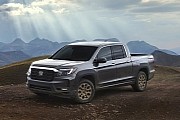history
The circumstances under which Honda came to be are at least manga worthy. Torn by the second world war, the country was yet far from making a full recovery. Focusing all the resources that were left to rebuild what had been destroyed, Japan could hardly fill at once all the voids that had been created. The Japanese auto industry was dazed, many factories having had to convert to cater for demands in military vehicles and aircraft.
The open spots that war had created had to be occupied fast and Honda was quick enough to settle on grounds that would later witness its growth as the 5th largest automobile manufacturer in the world. Soichiro Honda founded the company in 1948. The timing was perfect as many car or bike plants were destroyed during the war.
Focusing on developing a cheap indispensable vehicle, Honda strapped an engine to a bike, delivering a very efficient means of locomotion. Cheap and versatile, it set the cornerstone in Honda's incredible expansion. Ten years later, Honda would reach American land and establish the American Honda Co. World domination would naturally follow, made easy through clever subsidiary locations and dealership settlements.
The bloodhound-nosed company leader, Soichiro could sense that Honda would be big and committed to setting a new standard in car-production quality. This combined with his almost Napolean market take-overs proved to be a powerful concoction that allowed Honda to developed unabated by competition.
The brand became synonymous with usefulness and innovative engineering. The company's motorcycle division registered a tremendous sales increase, pushing Honda on the motorcycle manufacturer's podium. During the 1970's, Honda became the world's largest motorbike maker.
Its production of cars however, that had started during the 60's was slow at sparking as much attention as its 2-wheeled drives did. Although it had entered motor sport competitions, Honda cars failed to impress the average American driver. Having been designed for the Japanese market, the small-sized cars had little close to nothing to do against the large vehicles favored by the Americans.
In an effort driven by market-conquest desires, Honda launched the American-oriented civic, a larger model than any other previously released. Although still small compared to the US-made cars, the Civic became the first to attract the American buyer. The 70's energy crisis and subsequent emissions laws opened a second row of gates for Honda. Through their later Civic models such as the CVCC which was a variation on the stratified engine, the Japanese car maker managed to meet emissions regulations without having to equip their cars with catalytic converters that besides reducing pollution also raised automobile price tags.
In mid 70's, Honda would release another American-friendly vehicle, the Accord that quickly became Mr. Popular due to its fuel economy and easy drive. By 1982, Honda had reached heights that no other Japanese car manufacturers had before: opening a plant on American soil. There first assembly line was built in Maysville, Ohio. Three other plants later followed as well as the construction of one in Lincoln, Alabama and another in Timmonsville, South Carolina. The latest Honda factory opened in 2006 in Tallapoosa, Georgia.
After building the brand in the States, Honda found it hard to compete in the luxury car segments against the veteran American producers and European imports so it introduced its on line of luxury vehicles in 1986. Known as Acura, the range comprises variations of successful Honda models such as the Legend or Integra. Honda was the first Japanese car maker to do so, follow by fellow Nissan and Toyota which have launched their own separate luxury lines, Infiniti and Lexus.
The quest for a better engine was completed in 1989 when Honda announced the introduction of the V-Tec. Capable of variable valve control, the V-TEC syncs valve open/close times to increase power at high revs and reduce fuel consumption at low ones. Presently, Honda is involved in smart engine research, safety improvements and pre-crash warning and avoidance systems.
As far as their involvement in motor sports goes, Honda has been constantly striving to hold its position with one foot on the podium and the other one caught in menacing holdbacks and loses against other Japanese producers like Yamaha, Suzuki and Kawasaki.
The company's latest car-engineering improvements are primarily fuel and safety oriented, the latter having become one of the major criteria in car buying choices especially in the United States. The company's involvement in developing new cleaner vehicles has finally paid off with the recent release of the FCX Clarity. Powered by hydrogen cells, the car does not emit any pollutants, the only by products being water and oxygen. When its not developing new fuel technology, Honda is busy with being the largest engine producer on Earth, with over 14 million engines manufactured per year.
expand






























































